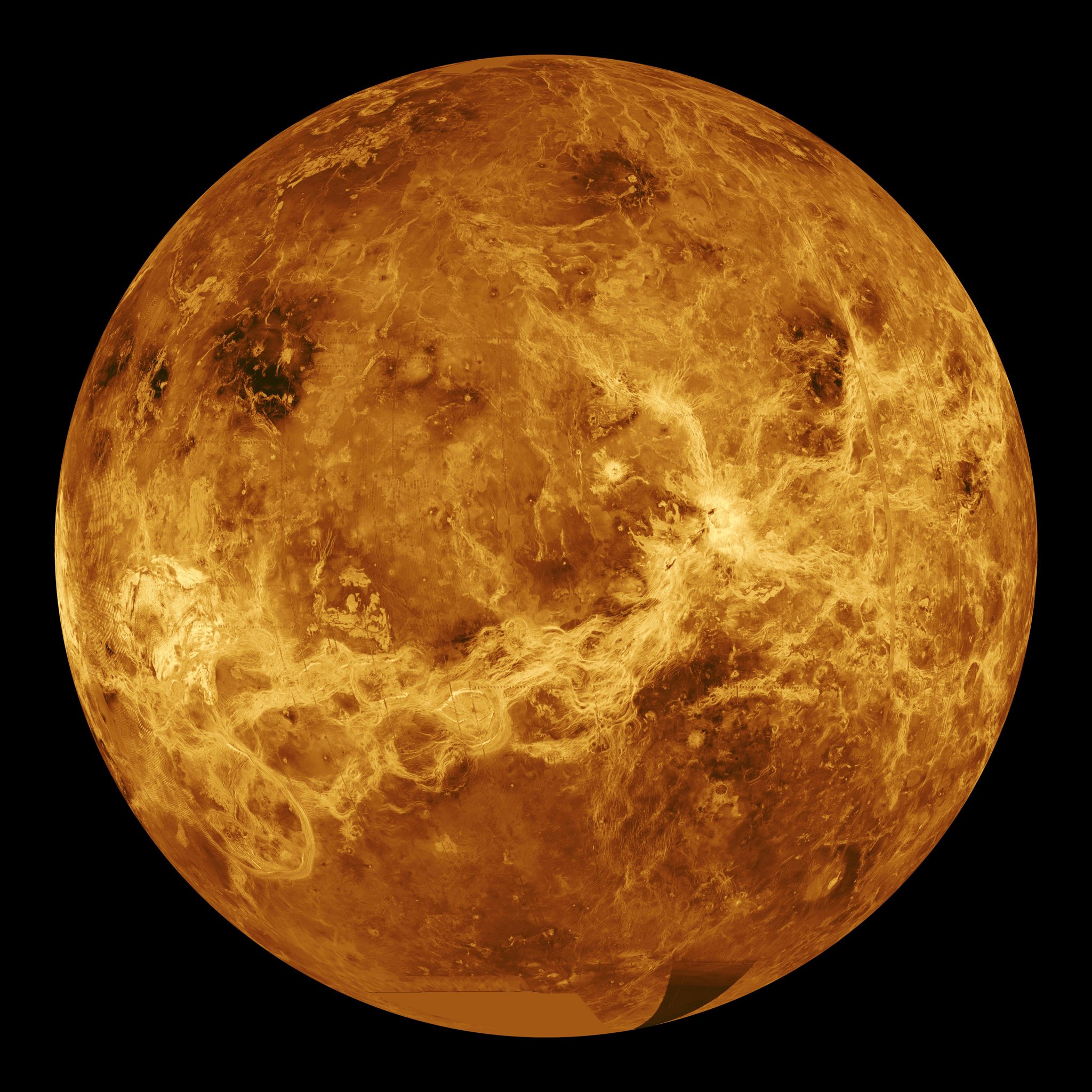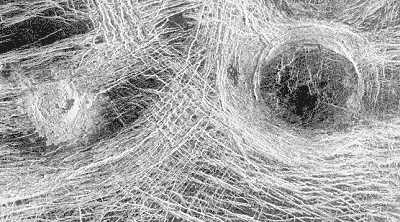
Venus and Earth are near-twins in size, mass, composition, and (from their positions in the Solar System) conditions when they formed. Like Earth, Venus has a large iron core and rocky silicate mantle. Its crust is largely basalt (again, like Earth). Now we have looked in detail at the earth, we compare the overall behavior of Venus. Much of our knowledge is based on the exquisitely detailed surface mapping by radar spacecraft (see below, from Magellan program, NASA). These maps show that the surface of this planet has not developed plates, and as a result the interior heat has dramatically different ways of rising to the surface compared with the earth.

The radar images show that Venus has had a lot of volcanic activity. The volcanoes themselves are similar in type to those on Earth (both shield and composite). In addition, Venus has large regions of very deformed terrain, that has been folded and broken, and long narrow features resembling spider webs. These features have no analogs on Earth, so far as we know.

A major difference, of course, is the dense atmosphere of Venus and the resulting high surface temperature. Constituents of many of the minerals that make up the continental plates on Earth have been converted to gas (e.g., carbonates have been destroyed and much of the carbon appears as carbon dioxide instead). This is consistent with the lack of evidence for continental plates in the radar images.
The surface of Venus appears to be geologically young. The most obvious indication is the small number of impact craters. Scientists suspect that the surface of the planet was renewed some 300 - 500 million years ago. The most likely event to cause this resurfacing is a planet-wide episode of elevated volcanic activity producing massive lava flows that might have lasted for millions of years.
This picture is so different from the relatively gentle action of plate tectonics on Earth that it is interesting to explore why it happened. The gradation of rock density that allows the hot magma on Earth to "float" toward the surface, power plate motions, and lose some of its heat may not be reproduced in Venus, so the radioactive heating has no place to escape. The high surface temperature also makes losing this heat less effective. If these ideas are correct, the resurfacing may be a repetitive event that has happened a number of times to this planet. We can picture a planet that stores heat until it "boils over", an event that discharges enough trapped heat to let it just simmer for some hundreds of millions of years until it boils over again.
Based on
Geology with Andrew Alden, http://geology.about.com/library/weekly/aa060803a.htm
Wikipedia Geology of Venus: http://en.wikipedia.org/wiki/Geology_of_Venus